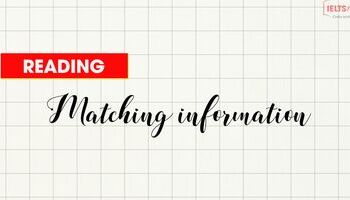Cùng tìm hiểu theo hai bài bài opinion essay mẫu, bài mẫu essay agree or disagree và cách phân tích, video hướng dẫn và từ vựng dưới đây để viết Task 2 tốt hơn nhé.
Bài opinion essay mẫu 1
Some people think that mobile phones should be banned in public places like libraries, shop and on public transport. To what extent do you agree or disagree? (Đề thi ngày 29/05/2021)
Analysis:
| Topic | the use of mobile devices |
| Viewpoint | complete ban of mobile phones in publicly accessible places |
| Question | agree or disagree (to what extent) |
Brainstorm:
| Introduction | [TOPIC] has become a perpetual concern/controversial topic. Some individuals believe that [VIEWPOINT]. In my opinion, {OUR OWN OPNION} |
| Body 1 | allowing mobile phones might benefit travellers, customers, and the community SUPPORT: (1) instructions and information without bothering staff to ask for their help (scanning QR codes); (2) public health crises (Covid-19 pandemic) reduce close contact. |
| Body 2 | degrading perception of public places SUPPORT: (1) turning public places into private ones (2) decrease interaction and communication among strangers |
| Conclusion | re-emphasize OUR OWN OPINION |
Essay:
The ever-growing use of mobile devices has become a controversial topic. Some individuals believe that the administration should issue a complete ban on mobile phones in publicly accessible places, including libraries and public transports. I cannot entirely agree with this perspective in some instances.
On the one hand, allowing mobile phones in public areas might benefit travelers, customers, and the community. Firstly, it could significantly enhance the traveler experience as visitors in understaffed public spaces could conveniently use their handheld devices to access essential information and instructions on the site without bothering any staff to ask for their help. For example, visitors to museums could simply scan QR codes to explore the information about painters and their masterpieces, or shoopers could use their phone to navigate and locate products in department stores. Secondly, during public health crises, like the Covid-19 pandemic, using phones in public areas could reduce unnecessary contact, contributing to contain the transmission of the virus in the community. For stance, ticket collectors could scan the e-ticket code by bus riders instead of collecting traditional paper tickers, or customers could pay their bill at shops and restaurants by scanning QR codes with their smartphones rather than using physical cards or cash.
On the other hand, I still argue that the ubiquitous mobile phones could degrade the public perception of public space as they create portable personal territories. Cellphone users might be under the illusion that they have privacy even in public areas, so they are more likely to violate social norms about having disruptive, private phone calls. They could also become more detached from the surroundings as they are engrossed in texting or browsing websites. As the discrepancy of public and private spheres might become less transparent, while the role of public spaces in educating people about how to behave and interact with those different from themselves might be incredibly hindered if smartphone users no longer feel they need communication with strangers. By banning mobile devices in public sites, organization and the administration could keep the public in the oublic sphere, and actively encourage people to observe and interact with one another.
In conclusion, while mobile phones could be beneficial to visitors’ experience and help contain the spread of virus during public health crises, I still believe that banning these devices could preserve the public spheres’ originality and enhance social interactions.
Words: 393
Vocabulary and Collocations:
| operating costs | chi phí vận hành |
| understaffed | thiếu nhân lực |
| public health crisis | khủng hoảng y tế công cộng |
| close contact/social distancing | social lockdown |
| quarantine | tiếp xúc gần/giãn cách xã hội cách ly xã hội cách ly |
| ubiquitous/omnipresent | xuất hiện khắp mọi nơi |
| social norms/social codes | quy tắc xã hội |
| discrepancy/difference | sự khác biệt |
| be detached from | xa rời/tách rời |
| portable personal territories | lãnh thổ cá nhân di động |
| public/private spheres | không gian công cộng/cá nhân |
Bài essay agree or disagree số 2
Education for young people is important in many countries. However, some people think that the government should spend more money on education for the adult population who cannot read and write. To what extent do you agree or disagree?
Analysis:
| Topic | Adult learning/education |
| Viewpoint | Increase public money on improving adult literacy
|
| Question | Agree/disagree to what extent |
Brainstorm:
| Introduction | TOPIC has become a widely perpetual concern. Some individuals argue that VIEWPOINT. In my opinion, I firmly agree with this perspective. |
| Body 1 | Giáo dục cho người trưởng thành có thể tạo ra những lợi ích về sức khỏe và kinh tế cho bản thân người học và gia đình của họ Support: đưa ra những quyết định về sức khỏe tốt hơn; những cơ hội tốt hơn về việc làm cũng như là chăm sóc con cái. |
| Body 2 | Đóng góp vào phát triển doanh nghiệp, GDP, và sự ổn dịnh xã hội Support: doanh nghiệp tiết kiệm được chi phí hoạt động, tuyển dụng; những nhập cư hòa nhập tốt hơn vào cộng đồng ��� đóng góp GDP và ổn định xã hội. |
| Conclusion | Summarize and re-emphasize our own opinion. |
Essay:
Adult literacy has attracted wide public attention in recent years. Some individuals believe that the administration should prioritize public investment in reducing illiteracy among adults. In my opinion, I firmly agree with this perspective.
Firstly, public spending on adult literacy could generate economic and physical well-being for learners and their dependents. Adult teaching potentially creates better health outcomes as literate adults could make better informed health decisions regarding nutrition and preventive care, which one is impossible as they could not understand instructions on bottles of medications or nutritional information on food packages. Also, improved literacy results in more employment opportunities because they might no longer find it challenging to understand a job application and seek higher-paid jobs, so that these adults are able to pull themselves out of poverty and chronic underemployment. Moreover, parent’s literacy could have the power to increase their children’s academic excellence, effectively breaking the cycle of low literacy and correlated poverty.
Secondly, reducing adult illiteracy could contribute more to business flourishment, GDP growth, and social stability. Investing in adult learning could save businesses billions of dollars as workers of poor literacy might cause orders to be canceled or dispatched incorrectly due to technical errors, so that businesses could lose loyal customers. Besides, adult literacy could simplify the recruitment process as employers no longer need to recruit staff externally but internally, so that they could expand their business without any friction. In addition, as immigration has become a major contributor to GDP growth in several countries, successful transition into native labor market remains elusive for many immigrants and guest workers whose skills and knowledge are usually under-utilized due to their language literacy issues. As a result, public spending on adult literacy could help these newcomers with their stable employment to better integrate, to contribute to local communities and to social harmony, otherwise they would be susceptible to isolation, loneliness, and anxiety.
In conclusion, the government should spare the state budget for adult literacy improvement due to its financial, physical, and economic benefits to learners and the society at large.
Words: 342
Vocabulary and Collocations:
| Adult literacy/adult learning | Giáo dục dành cho người trưởng thành |
| Rippling effects | Hiệu ứng gợn sóng (ảnh hưởng dây chuyền) |
| Economic/physical well-being | Thành công/khỏe mạnh/phúc lợi |
| Informed decision | Quyết định sáng suốt |
| Preventive care | Chăm sóc phòng ngừa |
| Chronic underemployment | Tình trạng thiếu việc làm kinh niên |
| Break the cycle of | Phá vỡ chu kì/vòng… |
| Major contributor | Nhân tố đóng góp chính |
| Remain elusive | ảo tưởng/hoang tưởng |
| Susceptible to | Dễ bị |
Luyện tập đề 3:
The best way to teach children to cooperate is through team sports at school. To what extent do you agree or disagree? (19/01/2023)
Nhìn sơ qua, ta thấy đây là một chủ đề từ vựng không quá xa lạ cả về từ vựng lẫn cách lập luận. RẤT NHIỀU bạn học sinh với cách suy nghĩ đơn giản sẽ ngay lập tức chọn cách viết Agree và sau đó phát triển bài viết bằng các luận điểm về lợi ích của team sports đối với co-operation.
Một số từ khóa và cách lập luận cơ bản cho hướng này sẽ là:
In sport competitions at school, team members are usually classmates, and matches are held between different teams representing classes in the same grade or school.
(Trong các giải thể thao ở trường học, các thành viên trong đội thường là các bạn cùng lớp, và các các trận đấu được tổ chức giữa các đội đại diện cho các lớp trong 1 khối hoặc 1 trường)
Khi đó => classmates are teammates who have to work together to achieve a common goal. (Các bạn cùng lớp chính là đồng đội, đoàn kết phối hợp cùng nhau để đạt được một mục tiêu chung.)
Hơn nữa, team sports đòi hỏi chiến thuật (strategies) => các thành viên đều phải hạ thấp cái tôi của mình và làm theo hướng dẫn (lower their ego and follow instructions)
The process of overcoming difficulty together as a team and seizing victory will teach them the meaning of cooperation. (Quá trình vượt qua khó khăn cùng cả đội và giành chiến thắng sẽ dạy chúng ý nghĩa của sự hợp tác)
Tuy nhiên, với cách lập luận quá một chiều như vậy, bài viết sẽ không thể đủ sức thuyết phục. Chúng ta cần nhìn nhận lại đề bài một cách cẩn thận hơn: “The best way to teach children to cooperate is through team sports at school. To what extent do you agree or disagree?”
Từ khóa “best way” chính là cái bẫy trong đề bài này. Ngoài team sports, còn có nhiều cách làm khác để dạy học sinh cách cooperate.
Nếu thí sinh không thể phân tích được bất kỳ một cách nào khác và so sánh nó với team sports, bài viết sẽ không đủ chặt chẽ và thuyết phục. Do vậy, chúng ta cũng có thể triển khai bài viết theo hướng thừa nhận - phản biện như sau:
Body 1: Thừa nhận sự hiệu quả của team sports trong việc dạy học sinh cách cooperate với 1 trong số các ideas đã trình bày ở trên.
Body 2: Phản biện bằng cách đưa ra một số nhược điểm của team sport đồng thời suggest một cách khác tốt hơn để dạy học sinh cooperate:
- Nhược điểm của team sports: children, mà cụ thể là teenagersthường có cái tôi lớn (have a large ego) => không dễ để dung hòa được những cá tính mạnh (strong personalities) => team sports đòi hỏi sự quản lý thật tốt (good management) từ người lớn (giáo viên hoặc huấn luyện viên), mà theo quan sát của tôi (my personal observation), huấn luyện viên hoặc giáo viên chuyên về quản lý thể thao (teachers who specialize in sports management) là hiếm có ở các trường học bình thường => gần như không thể làm được.
- Suggest một cách làm khác: các bài tập nhóm (groupwwork assignment) hoặc cách hoạt động nhóm nhỏ trong quy mô lớp học (group activities in the classroom) dễ tổ chức hơn với hầu hết các giáo viên bình thường và vẫn đạt được hiệu quả về sự cooperation giữa các học sinh.
Lấy 1 ví dụ: kể chuyện về bài thuyết trình nhóm (group presentation) mà em đã tham gia và đạt kết quả tốt nhờ cooperation: discuss, listen to each others’ ideas, assign and complete individual tasks for the shared purpose.
=> Từ đó, kết luận theo hướng Disagree, team sports không phải là “BEST WAY”
Hi vọng phần phân tích dàn ý trên đã giúp các bạn có thêm một số ý tưởng và từ vựng để triển khai bài viết này. Các bạn thử sức viết nha.
Các bạn tham khảo thêm:
IELTS Writing Task 2 - Topic: Sports (kèm video hướng dẫn)
Bài mẫu IELTS Writing Advantages and Disadvantages - có video học chi tiết





